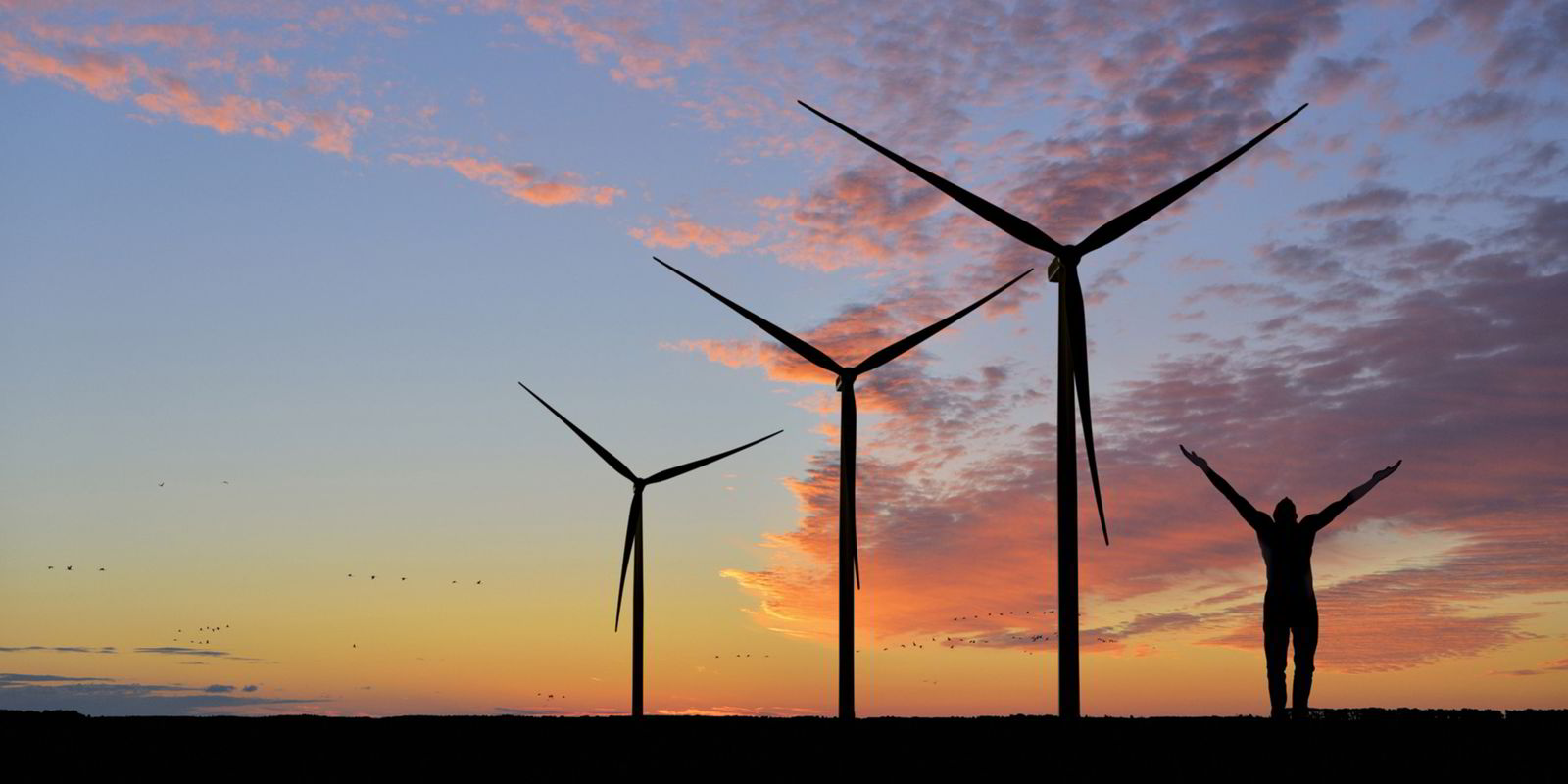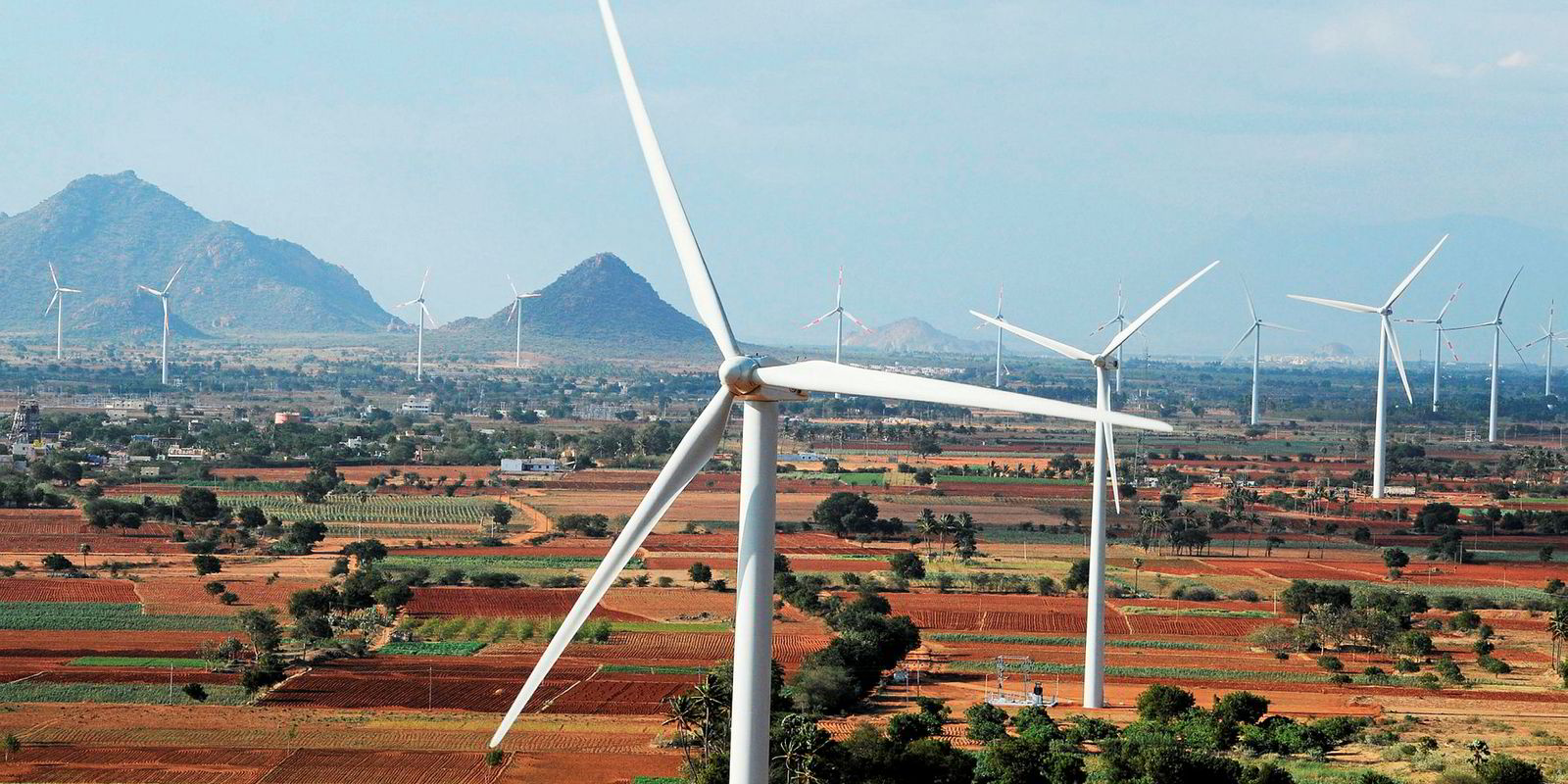Imagine if wind and solar farms could produce energy 24 hours a day — if PV plants could send energy to the grid at night, and wind farms could power towns and cities on the calmest days of the year. And what if these projects were as reliable, versatile and dispatchable as gas-fired power plants — but with low long-term fixed costs, zero carbon emissions and none of the concerns about security of supply?
What if we could eliminate the variability of wind and solar and remove all worries about how to balance a future renewables-reliant grid?
Sounds impossible, right? Wrong.
A new low-cost storage solution to enable dispatchable wind and solar is set to become commercially available as soon as 2020, and it could revolutionise the world’s energy industry.
The technology being simultaneously developed by wind turbine maker Siemens Gamesa and start-up Stiesdal Storage Technologies is a form of thermal energy storage that uses excess renewable energy to heat a “pack bed” of crushed volcanic rocks to as high as 600°C. The stones stay hot for days or weeks simply by being well insulated; then when energy is required, the heat is converted back into electricity and delivered to the grid for as little as €70 ($86.25) per MWh — far cheaper than any gas peaker plant or battery system.
“We want to really resolve the variability of renewables. This is our goal. This is what we’re working for,” says Siemens Gamesa chief technology officer Antonio de la Torre. “We want big, big capacity factors that can be as close as possible to the normal delivery of a natural-gas or nuclear power plant.”
The technology is the brainchild of wind industry pioneer Henrik Stiesdal, who came up with the idea almost ten years ago when he was chief technology officer at Siemens Wind Power.
“When I had the idea, I thought, ‘Whoa, this is really smart’. But then it turned out that John Ericsson, the Swedish-American who was one of the inventors of the ship propeller, had many of the same ideas back in the 1850s, so it was not new at all,” Stiesdal tells Recharge.
“But nowadays, with the equipment we have, we can do it much more efficiently than John Ericsson could 150 years ago.”
Stiesdal began developing the technology at Siemens Wind Power in 2010 — work that led to its successor company, Siemens Gamesa Renewable Energy (SGRE), building a 1.5MW demonstration project near Hamburg, Germany, which is currently under construction and due to be completed towards the end of the year.
Since retiring from Siemens at the end of 2014, Stiesdal has set up his own eponymous company, which is now working on its own version of the “hot-rock” thermal storage system, with a view to building a pilot plant of up to 5MW/120MWh in Denmark next year.
“There are many ways to skin a cat,” says Stiesdal. “After I left Siemens, I had a few additional ideas that I wanted to incorporate into the system.
“There are two main differences [between the Siemens and Stiesdal systems]. Siemens uses an electric heater to heat the pack bed; I use a heat pump. And then they use a steam system for discharge; I use an air-based system that resembles a gas turbine.
“They prefer a system that is a little simpler than what I do, which I also think is a good idea. But I have sort of become seduced by my heat pump system. I really like it.”
Both projects use off-the-shelf equipment to keep costs low. Stiesdal uses “dirt cheap” mineral rock wool as the insulation material, saying that his pack bed will only lose 0.5% of its heat per day; SGRE uses “a combination of different materials”, including mineral rock wool, but declined to provide a heat loss figure. Stiesdal uses basalt, the most common rock type on Earth, as the storage medium; SGRE uses a different “common rock”, declining to specify the particular type. Stiesdal says his rocks will reach 550°C, SGRE says its will hit 600°C.
But the biggest difference between the two companies is their commercial approach.
SGRE is focusing on building large thermal storage facilities at decommissioned power plants, reducing costs by as much as 50% by reusing existing equipment; while Stiesdal is concentrating on building modular units for installation at wind and solar projects.
“If you are a utility and you have an old power plant that doesn’t have a positive business case anymore because they have so much renewable energy, then you can take this and modify it,” explains de la Torre. “We call this the brownfield approach, and then you can reuse a lot of this electrical infrastructure and the civil infrastructure to become part of a storage plant.”
“It’s a fraction of [the cost of] batteries. Batteries will not get to such prices for decades. And, of course, we are working on getting that lower, but I think it’s a good starting point.”
Stiesdal describes this as “a really smart set-up”, but adds: “I shouldn’t be doing what they’re doing; it’s my old company, and we shouldn’t be competitors. So what I’m doing is something that is better suited to my capabilities, focusing on greenfield applications.
“My target is to do plants that are modular, with the packed stone beds in large, serially produced insulated steel tanks. Recycling of existing power stations is way beyond me; this requires companies with the capabilities of SGRE because they will be large, complex, one-off operations.
Stiesdal is aiming for “a simple, standardised charge/discharge unit that has roughly the same power rating as onshore wind turbines” — somewhere between 1MW and 5MW.This modularity means a project’s power capacity would be determined by the number of identical, industrialised charge/discharge units used — “just like when you build wind farms”, says Stiesdal. “And then you add the necessary number of storage tanks to each charge/discharge unit in order to achieve the required storage time.”
He explains that a 250MW PV plant with his thermal storage system would only need a 100MW transmission link — whenever output is greater than 100MW, the excess energy is diverted to storage and supplied back to the grid at night.
While a solar plant in a sunny part of the world would only require enough storage for 18 hours or so to deliver firm power, wind farms would need a lot more because calm periods can last for many days.
“I asked the question based on Denmark: if you were to ever make a storage system for a wind farm that would never run out of power, how long would it need to store energy for?” says Stiesdal.
“I did all the analysis from the year 2000 to now, and found that in May 2006 we had a prolonged period of low wind corresponding to ten days’ load in Denmark. So in order to make Denmark self-sustainable with wind, you would need ten days of storage. And to make ten days of storage, you would need quite a lot of excess wind capacity.”
According to Stiesdal’s calculations, his thermal storage system could possibly supply energy to the grid at a 20-year levelised cost of energy (LCOE) in the order of €70/MWh, presuming that excess wind or solar power would cost €20/MWh. He emphasises that there will be a price to pay even for excess electricity, because as soon as you introduce storage, you create demand for this previously unwanted energy, which will push up prices.
“It’s a fraction of [the cost of] batteries. Batteries will not get to such prices for decades. And, of course, we are working on getting that lower, but I think it’s a good starting point.”
De la Torre believes SGRE can achieve a competitive LCOE of around €100/MWh in brownfield applications by 2020, with the cost falling as the technology is commercialised and developed”.
Both Stiesdal and de la Torre believe there is no upper limit to the potential size of a project. De la Torre says a 1GWh storage project could be commissioned by 2025, while Stiesdal says his system could in principle store energy for 50 days or more, “but it would have to be a very big pile of stones, which is probably not economical”.
And despite their different focuses, both companies say their technology will work just as well on greenfield or brownfield sites.
This may seem very simple but there are quite a lot of things that you have to solve before you can build it
Of the three European utilities that have expressed an interest in using SGRE’s system, says de la Torre, two are interested in greenfield applications; while Stiesdal says his technology could be used by transmission system operators to avoid the need to build expensive new power lines.
After completion of the Hamburg project, SGRE aims to test the facility for about a year to figure out how to use the system in the most cost-efficient way possible. For instance, how long should the heaters — which de la Torre describes as like giant hairdryers — be turned on, and at what temperature and blow setting; how long should the heat be stored and at what temperature; and what speed should the steam turbines operate at.
“There will be a lot of testing and validation, testing and validation, to obtain the optimum output in terms of efficiency,” says de la Torre.
Once this phase is completed, SGRE will build a commercial pilot project “around 2020” of about 100MWh, probably in partnership with one of those interested utilities — while launching the technology onto the market at the same time.
Stiesdal does not have plans yet beyond the building of a demonstration unit. “We need to resolve whether there are any snakes in the paradise,” he says. “If things are indeed as good as they look, I don’t think we will have any problems finding a good candidate for a pilot project.”
But with such simple technology, couldn’t anyone do what SGRE and Stiesdal Storage Technologies are doing?
“One thing is that we’re protecting our work [with patents], and the other thing is this may seem very simple but there are quite a lot of things that you have to solve before you can build it,” says de la Torre.
Stiesdal agrees: “Basically, anybody could do a system like this, provided they stay clear of the SGRE patents. The thing, of course, is that the devil is in the detail. There are still many detailed solutions you need to work out.
“Sometimes I hear people say, ‘How difficult is it to build wind turbines? It’s just three blades and a tower and something else up there’. And you can say, ‘Yes, but some vendors are very successful, and some are less successful’. None of those who are successful are successful because they have a patent that nobody else can use. They are successful because they have figured it out, and they have a lot of know-how and they are good business people.”
Recharge asked Stiesdal if he could think of any downsides to his thermal storage system.
“The only downside is that it hasn’t been built yet. The time to celebrate is when we have a plant that’s cheap enough and does all the things it’s supposed to do.”
As far as de la Torre is concerned, this technology may be key to solving the problem of the variability of wind and solar.
“I am an engineer and my mind says that everything in the future will be possible — whatever you are asking for — because the human mind is ingenious and can develop new inventions,” he says.
“But for the time being, we see that this sort of storage is the best idea out there in terms of balancing the grid in a clean way.”




